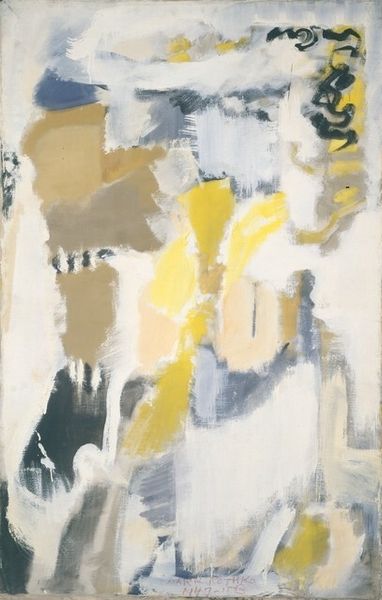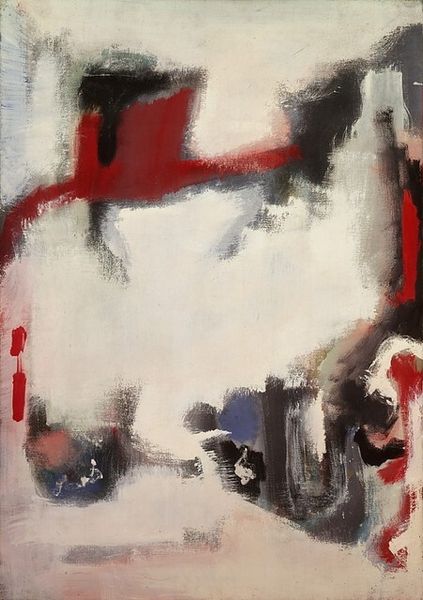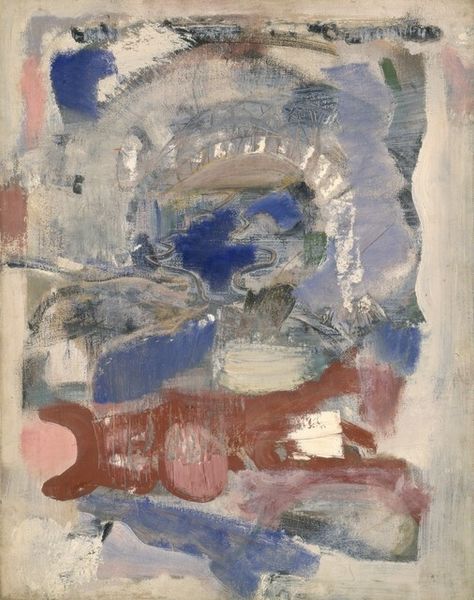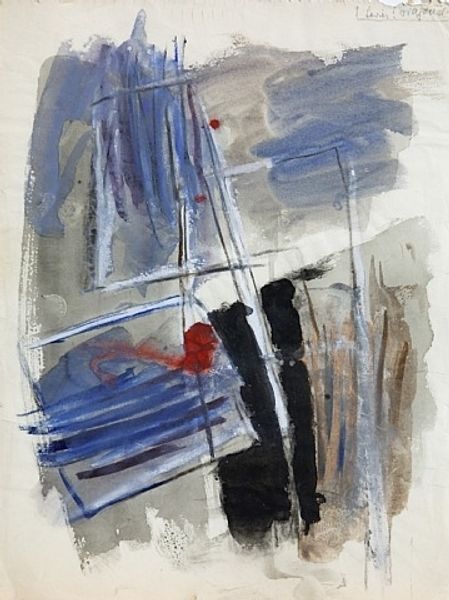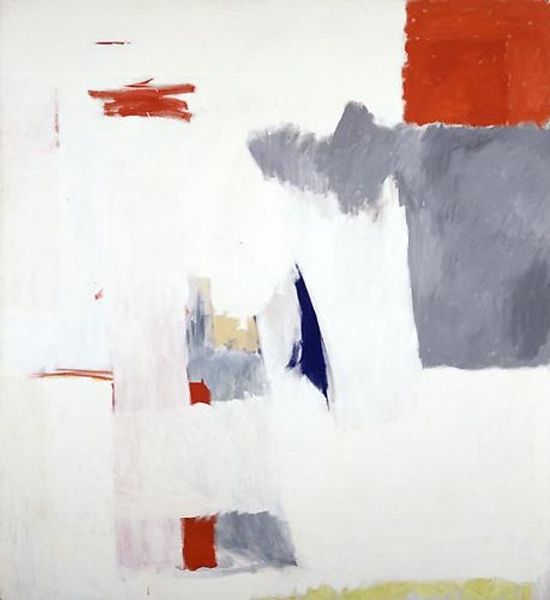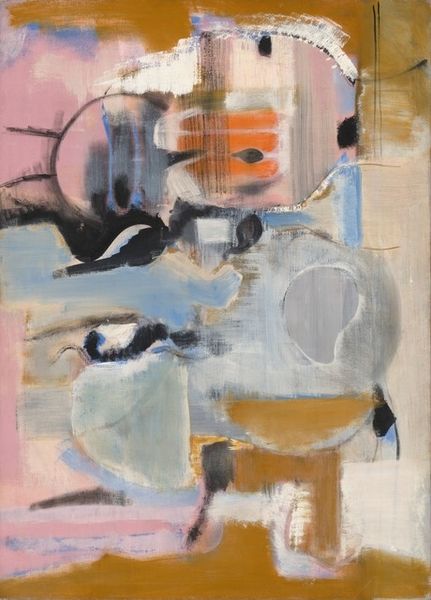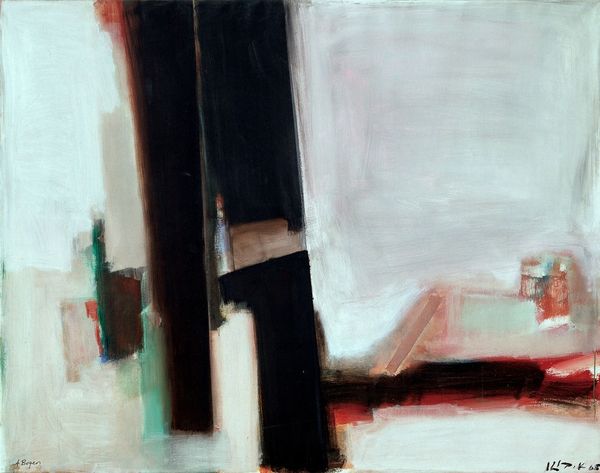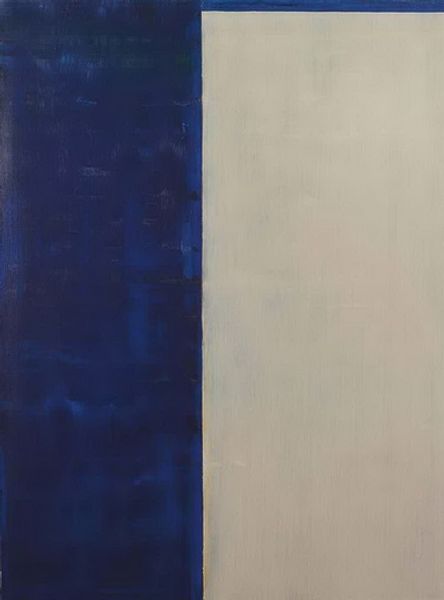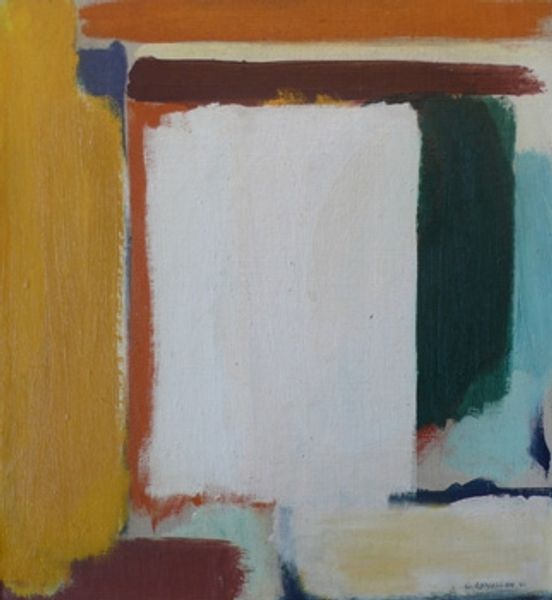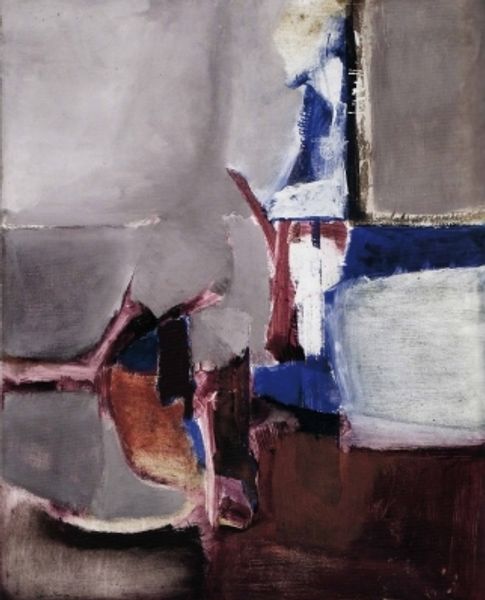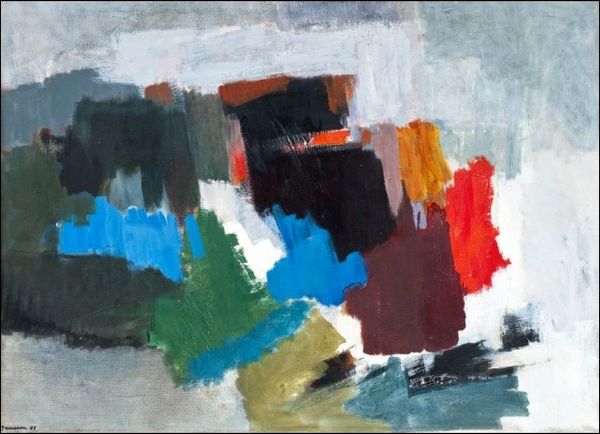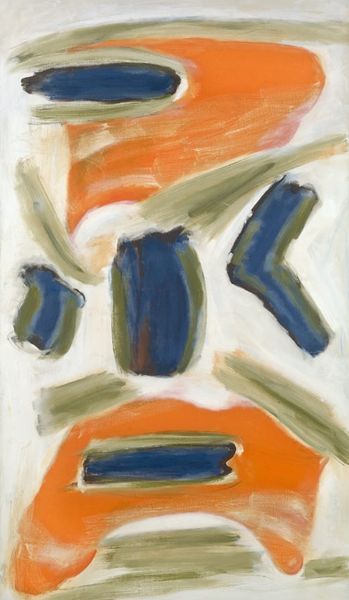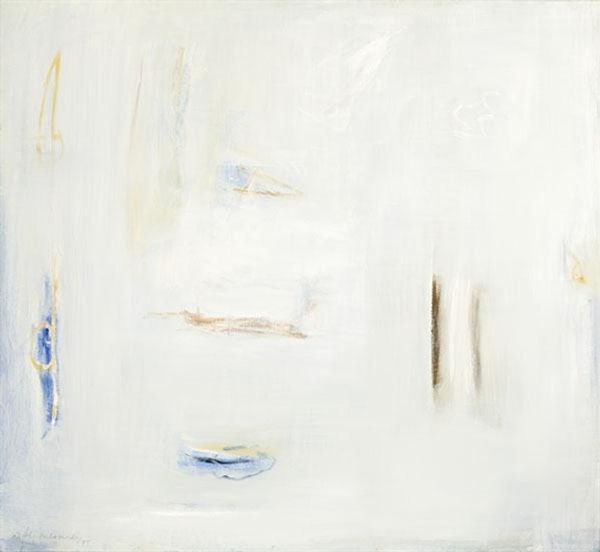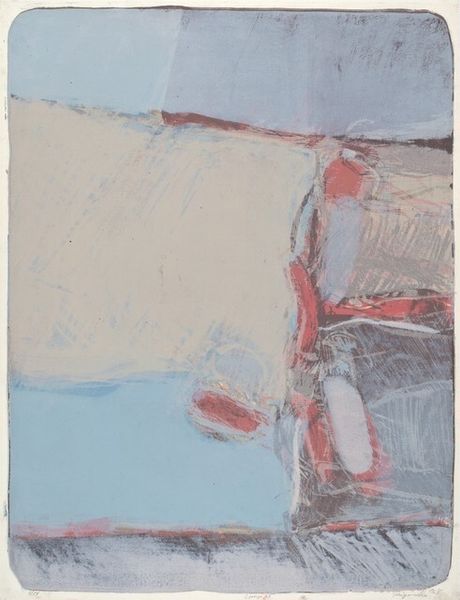
painting, oil-paint
#
abstract-expressionism
#
abstract expressionism
#
painting
#
oil-paint
#
landscape
#
form
#
oil painting
#
abstraction
Dimensions: overall: 96.2 x 53 cm (37 7/8 x 20 7/8 in.)
Copyright: National Gallery of Art: CC0 1.0
Curator: Let’s turn our attention to this untitled oil on canvas created by Mark Rothko in 1947. It's a striking piece from his transition into pure abstraction. Editor: It feels incredibly somber, almost like looking through a clouded window after a rainfall. The interplay between the blue and red evokes a sense of melancholy, doesn't it? Curator: It does. Rothko’s work in this period reflects the anxieties and traumas of the post-war era. Abstraction became a powerful vehicle for expressing these feelings, influencing artists to convey universal human emotions beyond the canvas and into the social conscience. Editor: The arrangement reminds me of altars or sacred spaces, especially with the hazy light effect. There's an undeniable depth here, almost as if Rothko aimed to capture spiritual, transcendent experiences using only form and color. Is this painting referencing grief through these abstracted archetypes of mourning? Curator: That's a compelling reading. Rothko believed his paintings could evoke profound emotional and even spiritual responses, and in doing so become more accessible and publicly valued. By eschewing figuration, he hoped to reach a more primal level of communication with the viewer, tapping into shared cultural feelings regarding themes of loss and redemption. Editor: Do you think the painting’s deliberate ambiguity—it being “untitled” gives it that sense of potential cultural and historical reflection? Are those vague architectural shapes meant to represent the shattered dreams and future uncertainties of 1947 society? Curator: Undoubtedly, the absence of a concrete title is part of that. In doing so, Rothko deliberately refuses to dictate a singular interpretation. The social trauma of the Second World War and, I believe, Rothko’s position as an immigrant also significantly shaped this evolution. He’s communicating emotion not information. Editor: The colours create an overall contemplative space. One can almost enter and project experiences and sentiments. Curator: Exactly. His abstract form becomes a public space for communal reflection. It is quite profound. Editor: Looking closer, it almost has the character of landscape. Curator: Yes! And now thinking about the cultural politics of mid-century art world—that connection to something representational gave abstraction greater purchase at the time, for its accessibility as much as its challenge to older orthodoxies. Editor: Well, I see an intense feeling now, which, strangely, brings comfort. Curator: And I find a deeper understanding of his artistic process and the painting’s place within broader conversations about the social role of art.
Comments
No comments
Be the first to comment and join the conversation on the ultimate creative platform.
